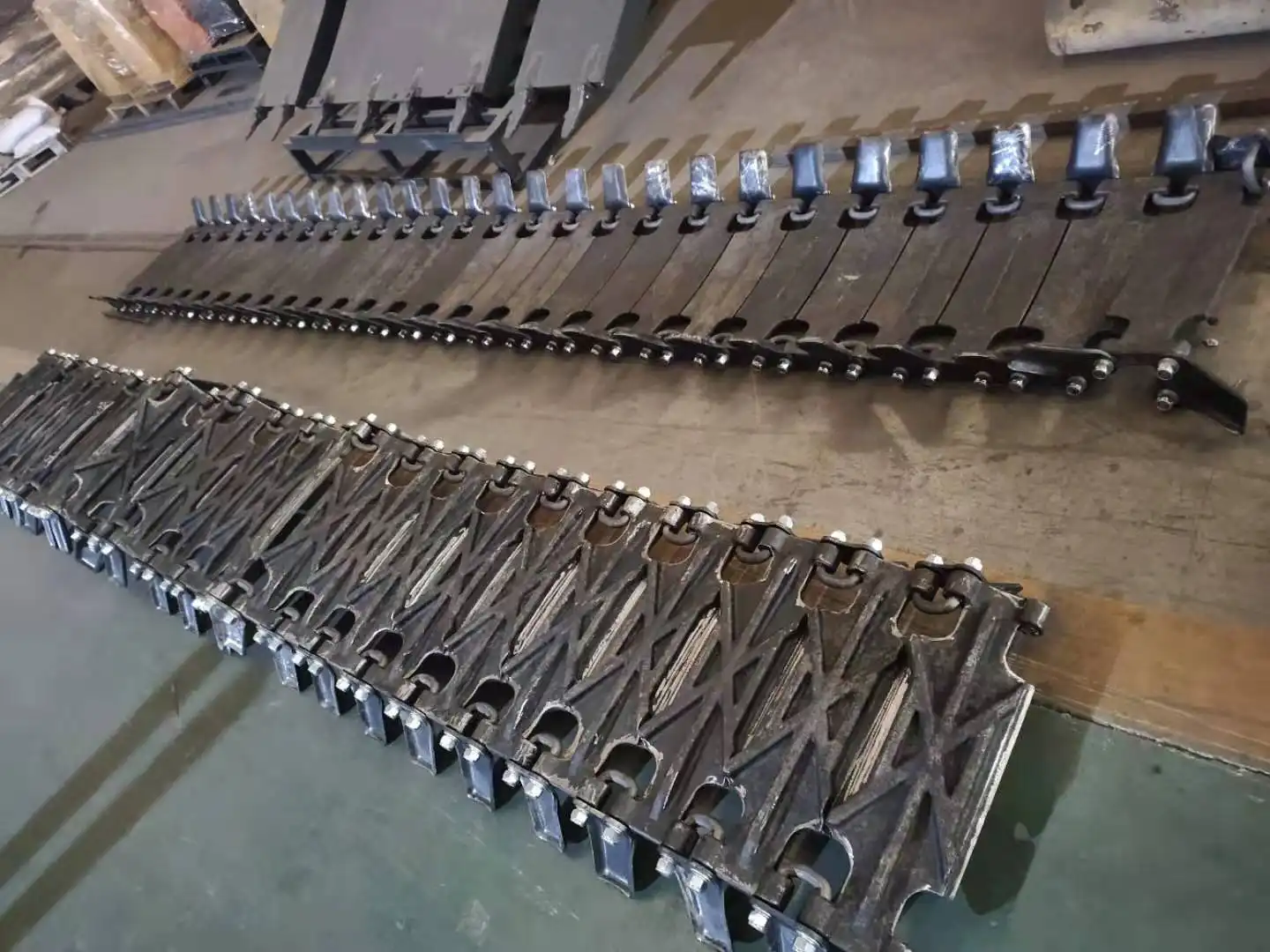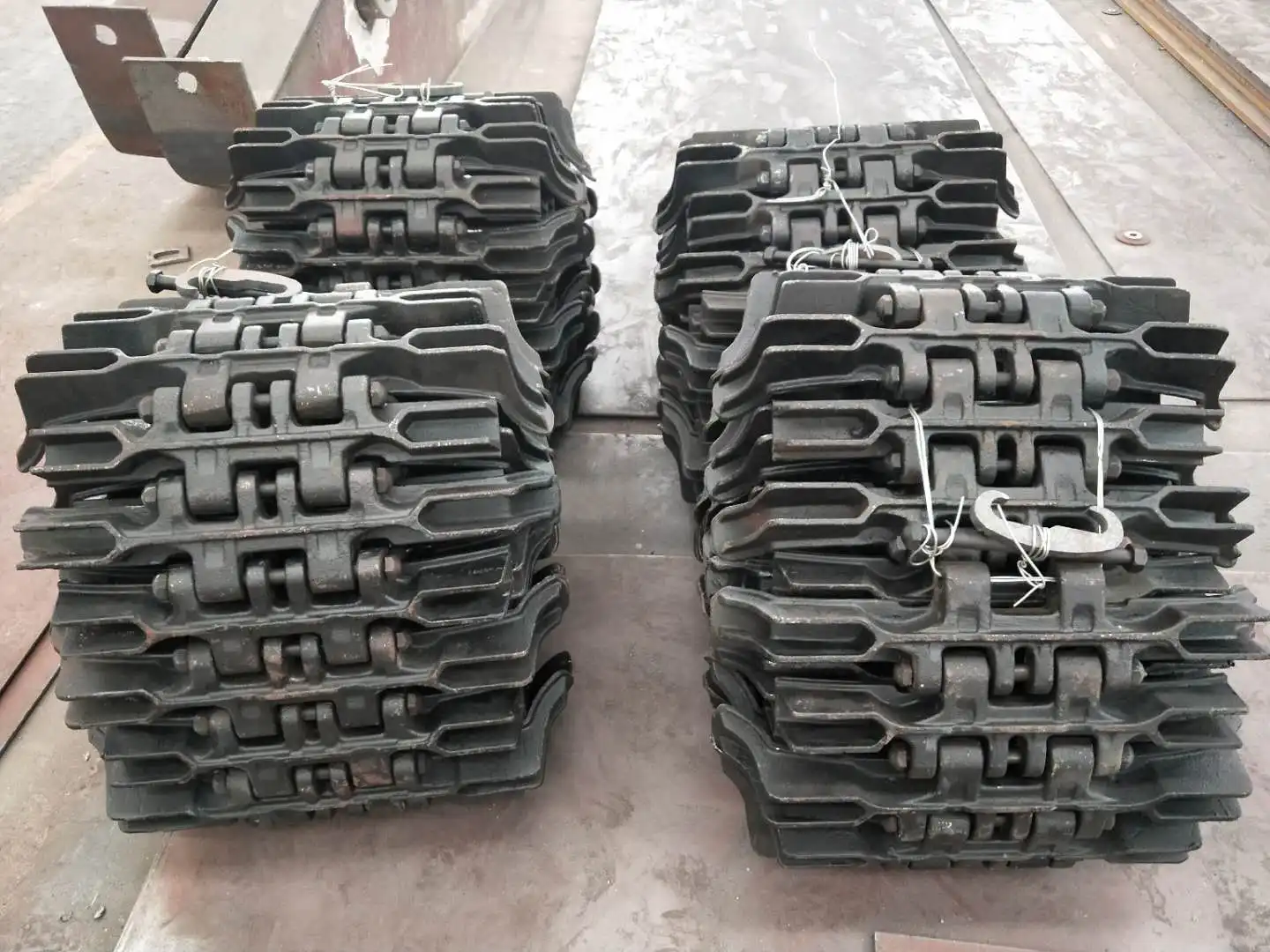Do you need chains on all 4 tires?
Whether or not you need chains on all four tires depends on your vehicle type and the specific driving conditions. For front-wheel-drive and rear-wheel-drive vehicles, chains are typically only required on the drive axle (front for FWD, rear for RWD). For 4WD and AWD vehicles, while one set of chains on the drive axle is often sufficient, using chains on all four tires can improve traction and control, especially in severe conditions. However, when operating heavy equipment like loaders, excavators, and construction machinery, the answer becomes more nuanced. A complete loader tire protection chain system covering all four tires provides maximum protection, stability, and operational efficiency. Heavy equipment faces unique challenges that passenger vehicles rarely encounter, including extreme weight loads, abrasive surfaces, and demanding operational requirements that benefit significantly from comprehensive tire protection across all contact points.
The decision to install chains on all four tires in heavy equipment applications involves considerations beyond simple traction improvement. Equipment operators must evaluate protection requirements, operational demands, and safety factors that influence overall performance. Understanding these factors helps make informed decisions that optimize both equipment longevity and operational effectiveness while ensuring worker safety and project success.

Maximize Traction & Stability
Installing chains on all four tires creates a comprehensive traction system that maximizes equipment stability and control across diverse operational conditions. This approach provides superior performance characteristics that single-axle installations cannot achieve.
Enhanced Grip Distribution
Four-tire chain installations distribute traction forces evenly across all ground contact points, creating balanced grip characteristics that improve overall equipment performance. This distribution prevents individual tires from becoming overloaded while ensuring consistent traction delivery throughout the entire footprint. Loader tire protection chain systems benefit from this balanced approach, as it prevents localized stress concentrations that can lead to premature wear or failure.
Uneven traction distribution between protected and unprotected tires can create handling imbalances that affect operator control and equipment stability. When only two tires have chains, the difference in grip levels can cause unpredictable behavior during turns, acceleration, or braking. Complete four-tire coverage eliminates these imbalances, providing predictable handling characteristics that enhance operator confidence and safety.
Load transfer dynamics improve significantly when all four tires provide consistent traction characteristics. Heavy equipment experiences constant weight shifts during operation, and having uniform traction across all contact points ensures stable load handling regardless of weight distribution changes. This consistency becomes particularly important during lifting operations or when navigating uneven terrain.
Improved Directional Control
Steering precision increases dramatically when all four tires maintain consistent ground contact through chain protection. This improvement becomes especially noticeable during complex maneuvers where precise positioning is essential. Equipment operators can maintain better control over their machines, reducing the risk of accidents and improving overall productivity.
Turning radius consistency benefits from four-tire chain installations that maintain predictable tire behavior throughout steering operations. Without complete coverage, differences in tire grip can cause equipment to pull to one side or experience unpredictable turning characteristics. Uniform chain coverage ensures that steering inputs translate to predictable directional changes.
Emergency maneuvering capabilities improve when all tires respond consistently to operator inputs. In situations requiring quick direction changes or emergency stops, having uniform traction across all tires can prevent loss of control and reduce accident risk. This enhanced control becomes particularly important in busy construction sites or confined work areas.
Reduced Slippage and Spinning
Tire spinning and slippage waste energy and reduce operational efficiency while potentially creating safety hazards. Four-tire loader tire protection chain systems eliminate these problems by providing consistent traction across all ground contact points. This consistency prevents individual tires from spinning while others maintain grip, creating smoother power delivery and improved fuel efficiency.
Power transfer efficiency improves when all four tires contribute equally to forward motion. Partial chain coverage can result in some tires spinning while others provide traction, leading to wasted energy and reduced performance. Complete coverage ensures that engine power translates effectively to ground movement without energy loss through slippage.
Operational smoothness increases when all tires maintain consistent contact with the ground surface. This smoothness reduces operator fatigue and improves overall equipment longevity by minimizing stress concentrations and vibration. The result is more comfortable operation and reduced maintenance requirements over time.

Uniform Tire Protection
Comprehensive tire protection requires addressing vulnerabilities across all four tires rather than leaving some exposed to damage. This approach ensures consistent performance and longevity across the entire tire set.
Consistent Wear Patterns
Uniform wear distribution across all four tires prevents the irregular patterns that develop when only some tires receive chain protection. Protected tires typically last longer and maintain better performance characteristics, while unprotected tires experience accelerated wear and reduced effectiveness. Installing chains on all four tires ensures consistent wear patterns that maximize tire set longevity.
Replacement scheduling becomes more predictable when all tires wear at similar rates. Mixed wear patterns complicate maintenance planning and can result in premature replacement of entire tire sets due to individual tire failures. Uniform protection allows for coordinated replacement schedules that optimize tire investment and reduce inventory complexity.
Performance consistency throughout the tire lifecycle benefits from uniform protection that maintains similar characteristics across all four tires. As tires age, those with protection maintain better performance than unprotected units, creating handling imbalances that affect equipment operation. Complete loader tire protection chain coverage ensures consistent performance throughout the tire's service life.
Comprehensive Damage Prevention
Hazardous materials and abrasive surfaces pose threats to all tires, not just those on specific axles. Construction sites, mining operations, and industrial environments contain debris that can damage any tire regardless of its position on the equipment. Four-tire protection systems provide comprehensive defense against these threats.
Puncture resistance improves when all tires receive equal protection from sharp objects and debris. Leaving some tires unprotected creates vulnerability points that can result in unexpected failures and costly downtime. Complete coverage eliminates these weak points and provides consistent protection across all ground contact areas.
Sidewall protection becomes particularly important in applications where equipment operates in confined spaces or near obstacles. All four tires face potential sidewall damage from contact with structures, debris, or other equipment. Comprehensive chain coverage protects vulnerable sidewall areas on all tires, preventing damage that could compromise tire integrity.

Even Weight Distribution
Proper weight distribution across all four tires is essential for optimal equipment performance and longevity. Chain installation affects weight distribution patterns and must be considered carefully to maintain equipment balance.
Balanced Ground Pressure
Ground pressure distribution affects both equipment performance and surface protection. Uneven chain coverage can create pressure imbalances that result in excessive ground damage or reduced equipment stability. Loader tire protection chain systems installed on all four tires provide balanced ground pressure distribution that minimizes surface damage while maintaining optimal traction.
Surface protection becomes important in applications where equipment operates on finished surfaces or environmentally sensitive areas. Balanced pressure distribution reduces the risk of surface damage while maintaining necessary traction and stability. This balance helps protect both the equipment and the work environment.
Flotation characteristics improve when weight distribution remains consistent across all ground contact points. Heavy equipment often operates on soft surfaces where flotation is crucial for preventing equipment from becoming stuck. Uniform chain coverage helps maintain optimal flotation characteristics across all tires.
Suspension System Optimization
Suspension systems work most effectively when all four tires provide similar characteristics and performance levels. Uneven tire protection can create imbalances that stress suspension components and reduce overall system effectiveness. Complete chain coverage ensures that suspension systems can operate as designed.
Vibration reduction benefits from uniform tire characteristics that prevent resonance and excessive movement. When some tires behave differently than others, the resulting vibrations can cause operator discomfort and accelerate equipment wear. Uniform protection creates consistent tire behavior that minimizes vibration and improves operator comfort.
Component longevity increases when suspension systems operate under balanced conditions. Uneven tire performance can cause premature wear of suspension components, leading to increased maintenance costs and reduced equipment reliability. Complete chain coverage helps maintain balanced conditions that extend component life.
FAQ
①Is it necessary to install chains on all four tires for heavy equipment?
While not always mandatory, installing chains on all four tires provides optimal protection, traction, and stability for heavy equipment. The benefits include consistent wear patterns, balanced performance, and enhanced safety, making it the recommended approach for demanding applications.
②What happens if I only put chains on two tires?
Installing chains on only two tires can create handling imbalances, uneven wear patterns, and reduced overall equipment performance. The protected tires will outperform unprotected ones, potentially causing stability issues and premature failure of unprotected tires.
③How does four-tire chain installation affect fuel consumption?
While chains may slightly increase rolling resistance, the improved traction and reduced tire spinning that comes with four-tire installation often results in better fuel efficiency. The enhanced grip eliminates energy waste from tire slippage and spinning.
④Can I mix different chain types on the same equipment?
Using different chain types on the same equipment is not recommended as it can create handling imbalances and uneven performance. All chains should be of the same type and specification to ensure consistent performance across all tires.
The decision to install chains on all four tires depends on operational requirements, safety considerations, and performance goals. Heavy equipment applications typically benefit from complete tire protection that provides maximum stability, consistent performance, and comprehensive protection. Loader tire protection chain systems covering all four tires offer superior operational capabilities that justify the additional investment through improved safety, efficiency, and tire longevity.
Tiannuo's comprehensive tire protection solutions provide the performance and reliability that demanding applications require. Our chains protect tires and triple their lifespan while featuring quick installation requiring only two people and one hour. With low failure rates and minimal maintenance requirements, our systems enhance traction and boost operational efficiency. The streamlined design includes few accessories and requires no post-installation upkeep, reducing fuel consumption and saving valuable operational time. Professional operators choose complete four-tire coverage for maximum protection and performance benefits.
Understanding the benefits of complete tire protection helps equipment operators make informed decisions that optimize both safety and performance. While partial coverage may suffice for some applications, the comprehensive benefits of four-tire protection typically justify the additional investment in demanding operational environments. If you want to learn more about products and how our complete tire protection solutions can enhance your operations, welcome to contact us at tn@stnd-machinery.com.
References
- Tire Chain Installation and Performance Analysis for Heavy Equipment Applications - Construction Equipment Research Institute
- Multi-Tire Chain Systems: Safety and Performance Benefits in Industrial Applications - Heavy Equipment Safety Council
- Weight Distribution and Stability Analysis in Chain-Protected Heavy Equipment - Equipment Engineering Journal
- Comprehensive Tire Protection Strategies for Construction and Mining Equipment - Industrial Equipment Performance Review
- Economic Analysis of Complete Tire Protection Systems in Heavy Equipment Operations - Construction Equipment Economics Association
About Author: Arm
Arm is a leading expert in the field of specialized construction and railway maintenance equipment, working at Tiannuo Company.

